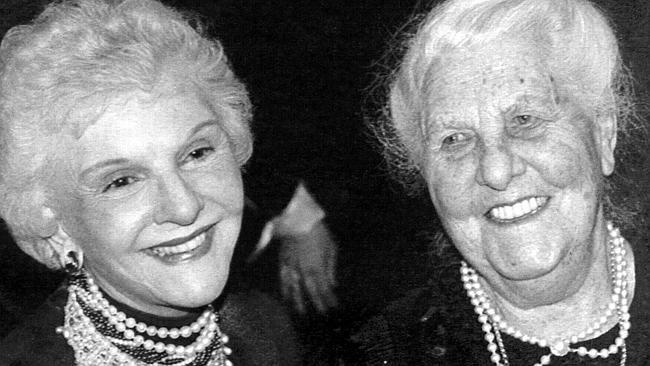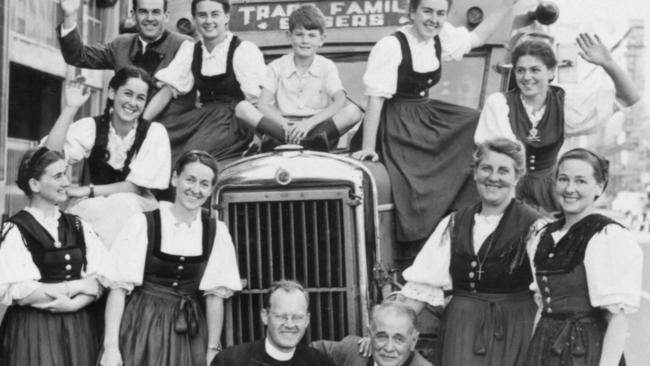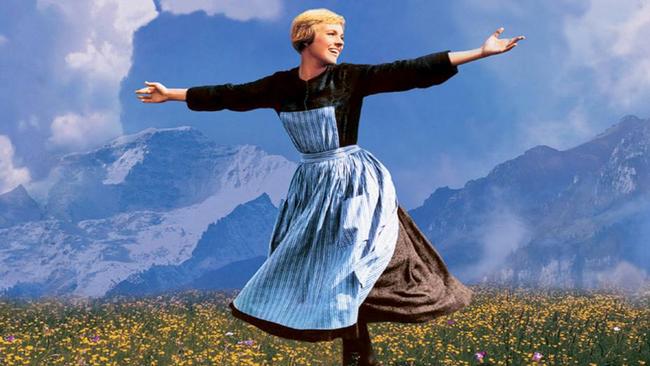Harmony not always part of Von Trapps’ musical saga
The winsome innocence of Mary Martin and trilling nanny Julie Andrews charmed audiances in The Sound Of Music but the real Maria von Trapp was not so easily impressed.

Today in History
Don't miss out on the headlines from Today in History. Followed categories will be added to My News.
The winsome innocence of Mary Martin, even in her mid-40s, and trilling nanny Julie Andrews charmed audiences as they won over a dour Austrian baron in Rodgers and Hammerstein’s favourite musical. But the real Maria von Trapp was not so easily impressed, saying both were “too gentle. I was a wild creature”.
The von Trapp marriage was also no dewy-eyed romance, with Maria explaining: “I didn’t love him, I loved the children.”
The marriage that inspired The Sound Of Music, opening at the Capitol Theatre today, was celebrated at Salzburg’s Nonnberg Abbey, attended by George von Trapp’s seven children, on November 26, 1927. Von Trapp was 47, his bride 22.
After Georg died in 1947, Maria published her memoir The Story Of The Trapp Family Singers in 1949 to promote the family show. She refused Hollywood offers, as producers only wanted to buy the memoir title.
German film producer Wolfgang Liebeneiner offered $10,000 for complete rights to her story, released in West Germany in October, 1956, as The Trapp Family, filmed in Salzburg, Austria, with traditional Austrian folk songs. Fresh-faced German actress Ruth Leuwerik, 22, whistled and skipped her way to instant stardom and set the model for Hollywood’s Maria.

Paramount Pictures purchased US film rights, intending to cast Audrey Hepburn as Maria. When Paramount dropped the option, studio director Vincent Donehue proposed a stage musical for his friend Mary Martin, supported by Broadway producers Leland Hayward and Martin’s husband Richard Halliday.
Envisioning a non-musical play, they hired Pulitzer Prize-winning playwrights Howard Lindsay and Russel Crouse, who would include songs from the Trapp Family repertoire. The producers also asked Oklahoma! and King And I composers Richard Rodgers and Oscar Hammerstein to add original songs. Rogers and Hammerstein, convinced their songs would not work with Austrian folk songs, offered a new score, which became their final collaboration.
Martin was 46 when she opened as young novitiate Maria at Broadway’s Lunt-Fontanne Theatre on November 16, 1959. Edelweiss had been written for co-star Theodore Bikel, then 35. Martha Wright replaced Martin in October, 1961, followed by Karen Gantz in July, 1962, Jeannie Carson in August and Nancy Dussault in September, 1962. Despite early mixed reviews, the show won seven Tony Awards and closed after 1433 performances on June 15, 1963. The national tour opened in Detroit, on February 27, 1961, with Florence Henderson, later Carol Brady in the Brady Bunch, as Maria.
The musical was even more popular on London’s West End, where Jean Bayliss opened as Maria at the Palace Theatre on May 18, 1961. Replaced by Sonia Rees, it clocked up 2385 shows.
In 1960 20th Century Fox had paid $1.25 million for film rights, which gathered dust in the wake of over-budget epic Cleopatra’s flop at the box office. Studio president Richard Zanuck eventually hired Ernest Lehman to write a film adaptation in December, 1962, and recruited West Side Story director Robert Wise.

Lehman had apparently selected Broadway actress Julie Andrews, with stage roles in My Fair Lady and Camelot behind her, as Maria. Wise added Grace Kelly, Doris Day and Shirley Jones to his short-list, while it was reported Shirley MacLaine wanted the role if Andrews was unavailable.
After viewing Andrews in yet-to-be released Mary Poppins footage at Disney Studios, both agreed she was the only choice. Despite reservations, Andrews signed with Fox to star in Music and one other film for $225,000.
Plummer turned down his role as Georg, eventually agreeing when allowed to rework the script. Still, he disliked filming and the final product, dismissing it as “The Sound Of Mucus” or “S&M”. But the 1965 movie took out the best-picture Academy Award and became an international blockbuster, remaining a record money earner for several years. Shirley Jones, later mother to The Partridge Family, played Maria on stage in 1966 and again in 1977. When British singer Petula Clark took the role in 1981, aged 49, she was reportedly concerned she was too old. Von Trapp, who joined the cast to sing an encore of Edelweiss, praised the show as the best Sound Of Music ever.
The first Australian production of The Sound Of Music starred soprano June Bronhill as Maria when it opened at Melbourne’s Princess Theatre in October 1961, toting up a three-year run.
In November 1999, Australian songbird Lisa McCune played Maria, a role taken by Julie Anthony (below) in 1983, in an Australian revival at Sydney’s Lyric Theatre.
Originally published as Harmony not always part of Von Trapps’ musical saga


